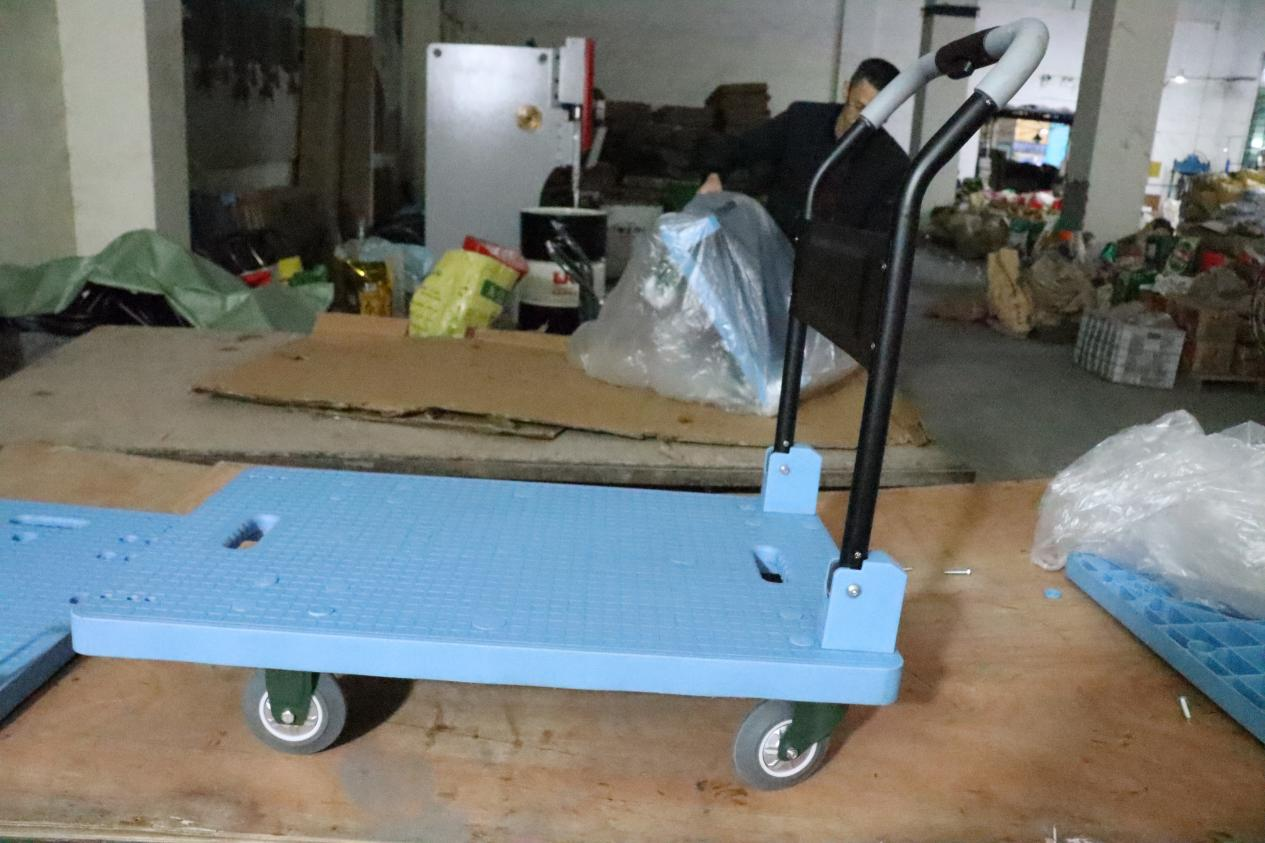Industrial trolley is a common material transportation tool that is widely used in industrial production and logistics. It usually consists of a platform and a pair of wheels, and can be used to move heavy loads within places such as factories, warehouses and logistics centers. The following is an introduction to the principle of industrial trolley:
1. Structure principle:
The main structure of an industrial trolley consists of a platform, wheels, bearings and pushers. The platform is usually made of strong metal material with sufficient load-bearing capacity. The wheels are mounted on the four corners of the platform and are usually designed with casters or universal wheels to provide flexible mobility. Bearings are used to minimize friction and keep the wheels running smoothly. Push handles are handles fixed to the platform for pushing and navigating the trolley.
2. Principle of use:
The principle of use of an industrial trolley is very simple. The operator places the material on the platform and pushes the cart by applying force through the pusher. The wheels of the cart roll on the ground and transport the material from one place to another. The wheels of industrial push carts typically use friction to provide firm support and propulsion. The operator can adjust the direction and speed of the cart as needed.
3. Features and applications:
Industrial carts have the following features and advantages:
- High load-bearing capacity: Industrial carts that have been designed and tested are usually capable of carrying large amounts of weight, thus moving heavy objects efficiently.
- High flexibility: industrial trolleys are usually designed with wheels, which makes it easy to maneuver and move in small spaces and improve work efficiency.
- Safe and Reliable: Industrial trolleys are structurally stable, with bearings and wheels designed to ensure a smooth and reliable transportation process.
Industrial trolleys are used in a wide range of applications, including material handling in factories, stacking of goods in warehouses and loading and unloading in logistics centers.
Post time: Jun-05-2024

